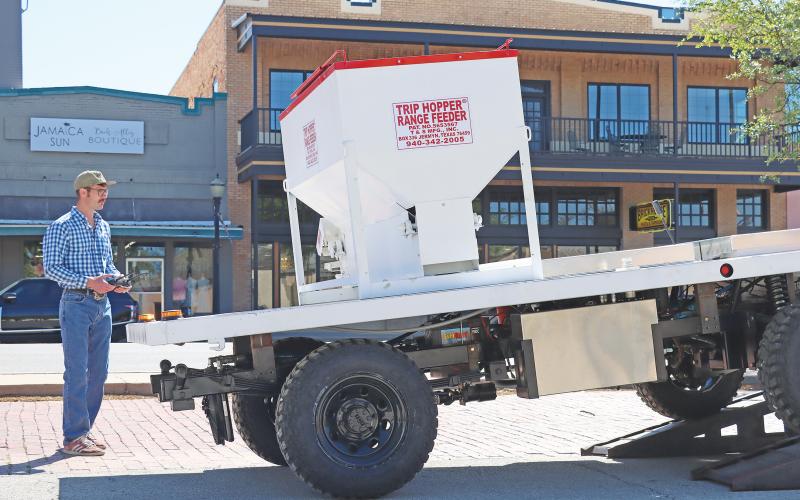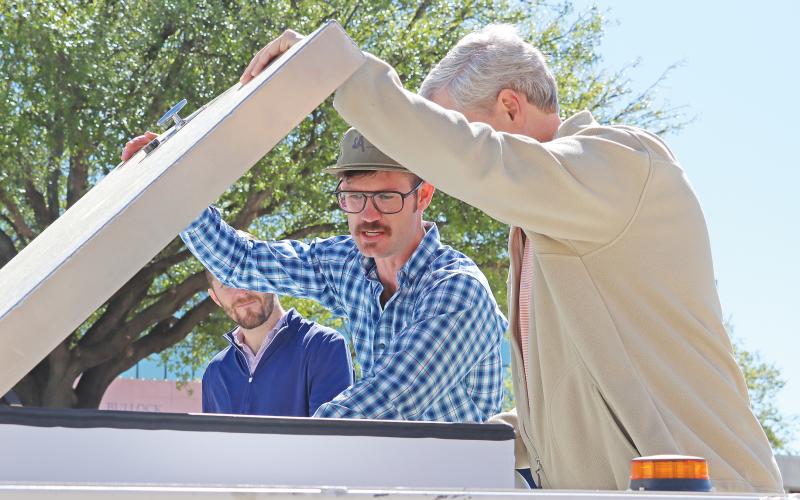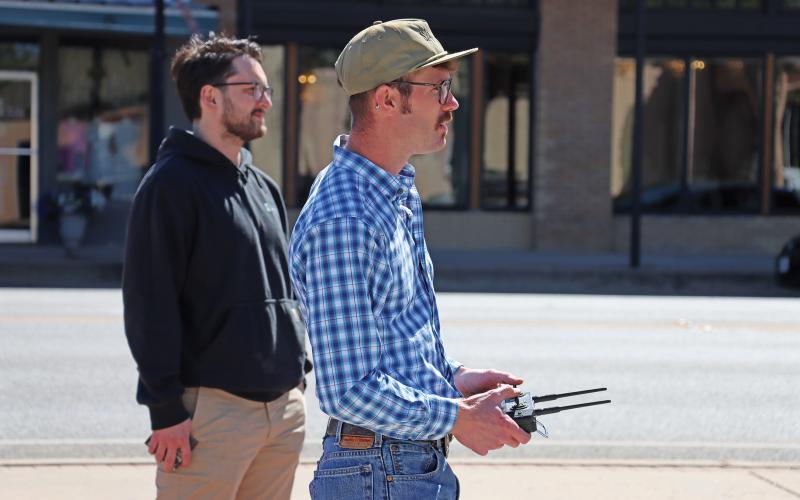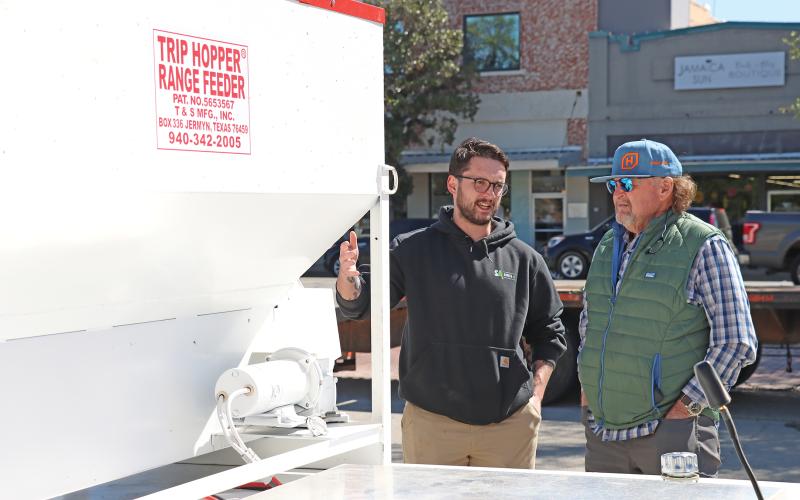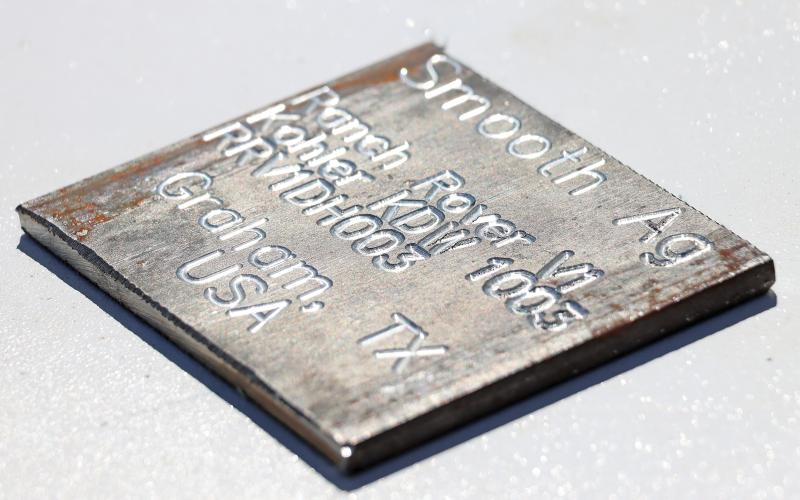Ranching of tomorrow: Smooth Ag bringing robotics to ranchers with autonomous Ranch Rover
By automating the cattle feeding process the Graham-based company Smooth Ag is looking to bring the innovation of robotics to ranchers through its autonomous Ranch Rover vehicle.
The Ranch Rover was the creation of fourth-generation rancher River McTasney who had the agricultural lifestyle ingrained in his bones at a young age growing up on a 3,000-acre ranch while tending 120 head of cattle.
“I went to school at Paint Creek High School, an agriculture community. Most of us kids there grew up working on our own stuff. We have a mechanical skill set from that lifestyle that really equips us with the problem solving skills that I think a lot of people from outside of the rural community may not quite get,” McTasney said. “...So that problem solving skill set really helped with this later on down the road.”
Following high school, McTasney attended Texas A&M University and graduated in 2018 with a degree in construction management. He worked for a year in College Station in sales for an HVAC company before deciding he wanted a break and moved back to his family ranch.
“I was feeding cows and I was like, ‘There’s got to be a better way to do this.’ ...Being one of the only able-bodied people on the ranch to do other stuff, there was other stuff I needed to get done instead of spending three hours a day in the feed pickup,” he said. “I started tinkering with different ideas and finally decided that a mobile platform, just like a feed pickup without the driver, was the best way to do it.”
McTasney learned to code with the intention of making the dream of the Ranch Rover a reality. Over the next two years he built a conceptual machine on an old pickup truck frame and eventually moved up to the current prototype.
“It has a 4,000-pound payload. It’s GPS waypoint navigation fused with machine vision, so it’s completely autonomous. They have the ability to set routes and then with those routes set individual feed missions... and those are on a timer,” he said. “You can schedule them however you like, you can pick your feed locations (and) pick how much you’re going to feed at each of those feed locations.”
The rover has data-driven decision making which McTasney said can provide owners information for planning.
“There’s a lot of data collection involved as well that’s going to be extremely valuable. With computer vision it’s one of those things that is hard to see, but the way technological advancements are working out right now computer vision is getting amazing,” he said. “The type of data that we’re going to be able to directly feed back to the customer based off of that is actually going to be really insane. It’s going to be very valuable. So that’s just one of the perks of solving a problem directly is we get to put up those various sensors and cameras on this thing and kind of knock out two birds with one stone.”
Around a year-and-half ago McTasney connected with representatives from Graham to see if they wanted to be involved with making the city a home base for the project. The site was also something McTasney wanted due to having land close.
“We have land in Caddo as well... just East of Breckenridge. I wanted to stay around home because we do have obligations to the ranch. ...Graham is just a great community, too,” he said. “...Whenever you’re doing something like this, you’re really grabbing everything you can to stay motivated and keep doing it and so you really want to be surrounded and supported by a community that believes in success, beliefs in new things. I think Graham did a really good job of displaying that and really got me roped in.”
The company has a 4,000 square foot shop located on Rocky Mound Road in Graham and has expanded to a three-man team internally.
The company has $400,000 in the sales pipeline for orders and will be delivering its first vehicle to Oklahoma State University next week. The team has been busy showcasing the rover, most recently at the Texas and Southwestern Association Convention at the end of March.
“The response has been incredible. …We picked up three more customers there in one day. That’s without having any inventory, which is a really neat thing,” he said. “These guys know... it’s going to be a while there. They got about a six month lead time. So that in itself, getting people to sign a letter of intent saying that they’re going to buy one as we produce, that’s... a very validated customer and a very convicted customer. So they believe in us, they really like what we’re doing. This is something they feel can be very useful and beneficial in their operation.”
McTasney said the rover is tailoring to the actual needs of cattle ranches which is assisting with the labor shortage. While the company is focused on the Ranch Rover for pasture land for open range cow/calf operations, they plan to address another need with a feedlot machine within the next 18 months.
“(There’s) a huge demand… in feedlots. That’s a much bigger machine mechanically... so we’ll focus on Ranch Rover, this pasture land model, to grow those sales numbers to continue to prove validation for investors,” he said. “We’ll move sometime in the next one-to-two years to building out a much larger machine built specifically for feedlots, which is going to be a real enterprise as this is new technology for them as well. And that’s a huge labor burden, compared to the pasture land.”



